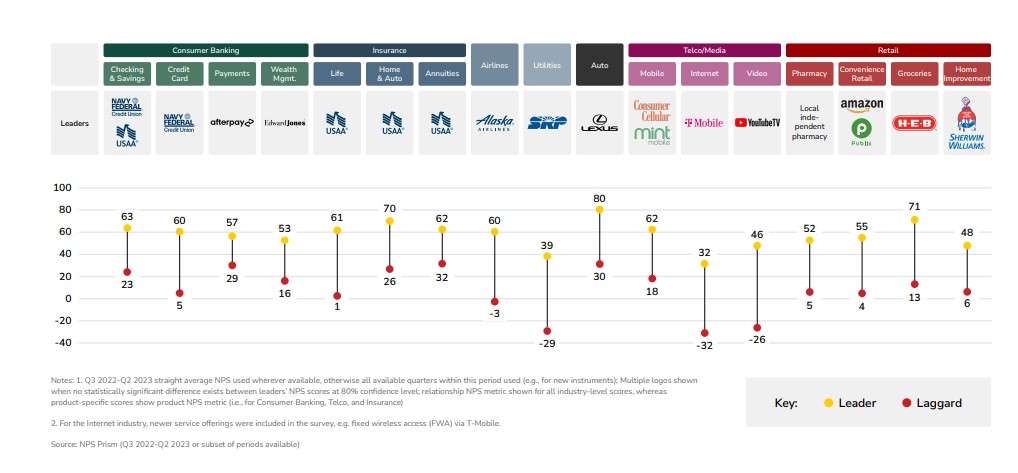Net Promoter Score (NPS): Advantages & Concerns
If Net Promoter Score (NPS) has shown us anything, it’s that building your brand is one thing, and gaining customer loyalty is another. All of your efforts to promote your business won’t go very far if your customers don’t recommend it to others. That’s why measuring the likelihood of customer recommendation is crucial to your success.
In this blog, we will delve into this client experience assessment tool and understand how it’s calculated and how valuable it is, before addressing how to resolve the tool concerns.
What is Net Promoter Score (NPS)?
NPS is a metric used to assess customers’ loyalty and satisfaction. Customers are asked the question: “How likely are you to recommend our product/service to a friend or colleague?” to which they provide a rating on a scale of 0 to 10. Depending on their response, they are categorized into one of three groups: Those who give ratings of 9 or 10, as Promoters; 7 or 8, as Passives, and between 0 to 6, as Detractors.
The score is then calculated by subtracting the percentage of Detractor customers from the percentage of Promoter customers.
NPS = ( Promoters – Detractors) x 100
Total sample surveyed
As a number, Net Promoter Score always ranges between -100 to 100. As you can imagine, the score is negative when a company has more Detractors than Promoters and vice versa.
Moreover, these scores vary significantly between industries. A 2023 study by NPS Prism uncovered the US-based benchmark ranges per sector (see diagram below):
-
- Internet service providers: 32 to -32
- Auto dealers: 80 to 30
- Home improvement: 48 to 6
- Utilities: 39 to -29

NPS Prism Winter 2023 U.S. Cross Industry Leaderboard
In general, scoring above 0 is a good indicator since it means a company has more Promoters than Detractors. You might think that major global companies would score well above 70, but this is actually not the case: in 2023, Netflix had an NPS of 67, PayPal 65, Amazon 73, Google 58, and Apple 61. Also, while scoring under 0 might seem bad in itself, one must take into consideration the industry average. For example, -5 isn’t a great number for a company, but if its competitors have an average of -20, -5 is relatively good. Ideally, one should always strive to have more Promoters than Detractors and score above 0.
Advantages of Net Promoter Score
The NPS system might not be the only option available to measure customer satisfaction, but it’s definitely among the most widely used across different industries worldwide. This popularity can be attributed to its many qualities:
-
- Simplicity: The single, clear, and concise question used to measure rating (0 to 10) makes for a straightforward approach that enables businesses to collect and analyze data quickly.
- Insights that can lead to actions: The tool provides actionable insights that can drive improvements in customer satisfaction and loyalty. By categorizing respondents as Promoters, Passives, and Detractors, businesses can quickly identify areas for improvement and tweak their strategies accordingly.
Collecting data is only the first step; the real value lies in taking action based on the insights gained.
-
- Predictive Power: Research has shown a strong correlation between NPS and business growth. Companies with high scores tend to experience faster revenue growth and higher customer retention rates. This predictive power makes it a valuable tool for assessing the long-term health of a business.
- Benchmarking: As mentioned above, this assessment tool allows companies to benchmark their performance against industry standards and competitors. By tracking their score over time and comparing it to peers, businesses can identify areas of competitive advantage and areas that need attention.
Concerns Surrounding Net Promoter Score
Despite the popularity of Net Promoter Score among business leaders, it has also generated controversy among researchers and experts. Some of the attributes that spark these criticisms include:
-
- Limited Context: Critics argue that it provides limited context, as it only measures one aspect of the customer experience. While it offers insights into overall satisfaction and loyalty, it may overlook other areas for improvement that require attention. To avoid that, we suggest conducting the NPS assessment differently. For example, for extra precision, we can target the evaluation right after an explicit interaction with your client to understand the satisfaction context.
- Response Bias: As is the case with all types of satisfaction surveys, most companies face low response rates with their client experience surveys. Customers who have had extremely positive or negative experiences are more the most likely to answer surveys, which skews results. This can lead to an inaccurate representation of overall customer sentiment. To fix this accuracy issue, you’re better off by not waiting for your client to answer an online survey, and by actively contacting them by phone to receive their immediate feedback.
- Inconsistent Interpretation: The interpretation of scores can vary between industries and companies, making benchmarking challenging. What constitutes a “good” score in one industry may be considered average or poor in another, leading to misinterpretation and misalignment of goals. For that reason, you need to hire an expert who will guide you on how your company is doing relative to the market.
- Lack of Action: Collecting data is only the first step; the real value lies in taking action based on the insights gained. However, some companies struggle to translate scores into meaningful changes in their products or services, resulting in stagnant or declining customer satisfaction levels. Hence, TMC offers an automated service that notifies the responsible person as soon as an unsatisfied client is identified. This allows your company to respond fast enough and restore the matter before it becomes an issue that leads to client attrition.
In conclusion, despite some concerns, the tool offers numerous important advantages. To leverage its full potential, businesses must take real action based on the feedback, and ensure methodology integrity. That is why TMC revolutionizes the NPS process by adding the power of human interaction. We call a sample of your clients and receive immediate feedback. This feedback is analyzed in real time and available for you to act upon right away.
Get in touch with TMC today to discover how we can support you with a better client experience using a revolutionary Net Promoter Score process.


